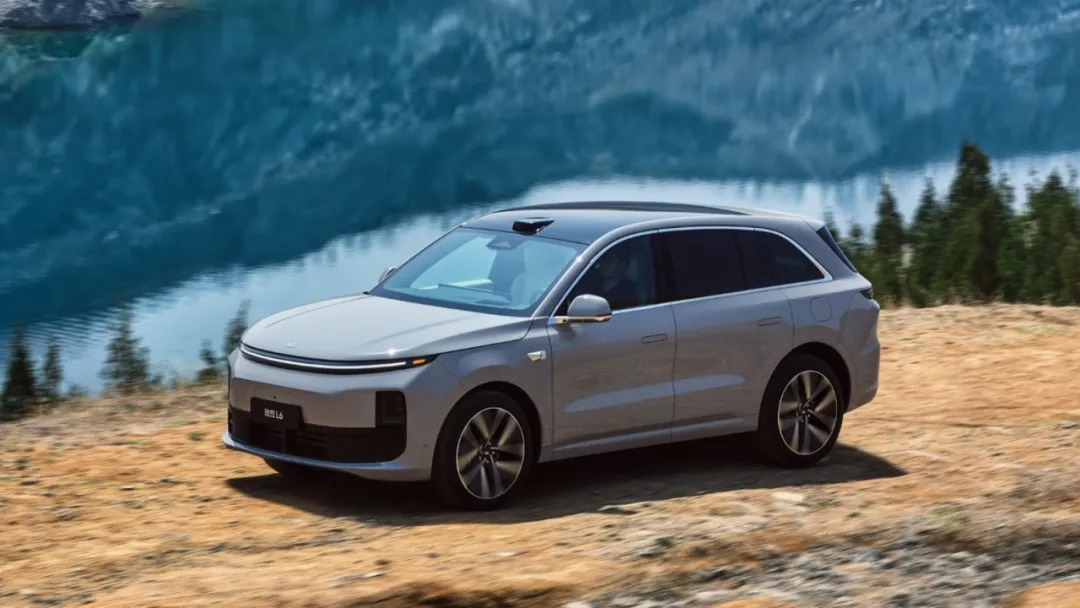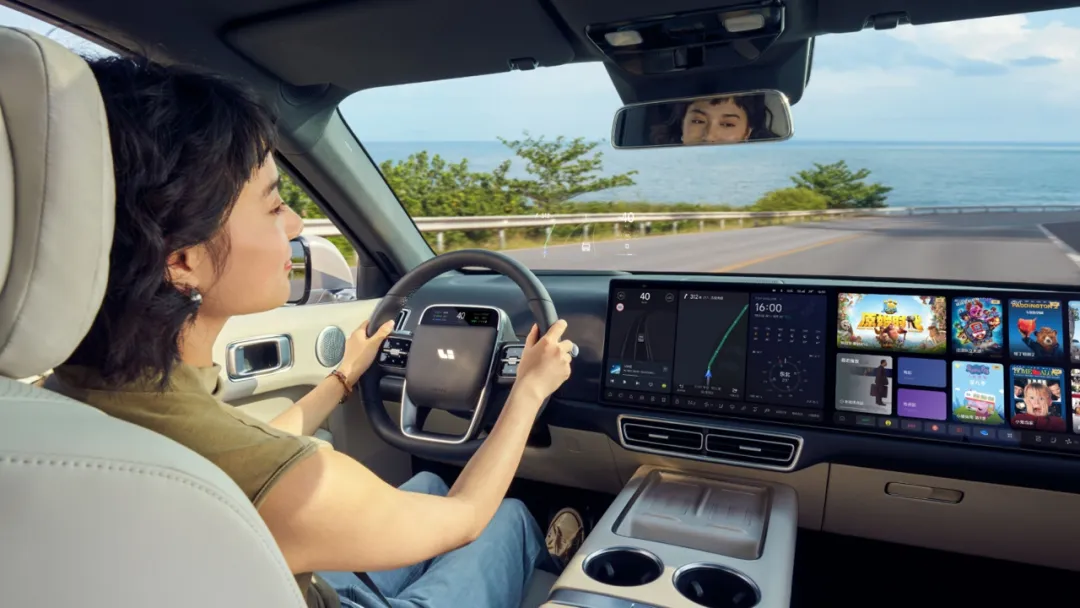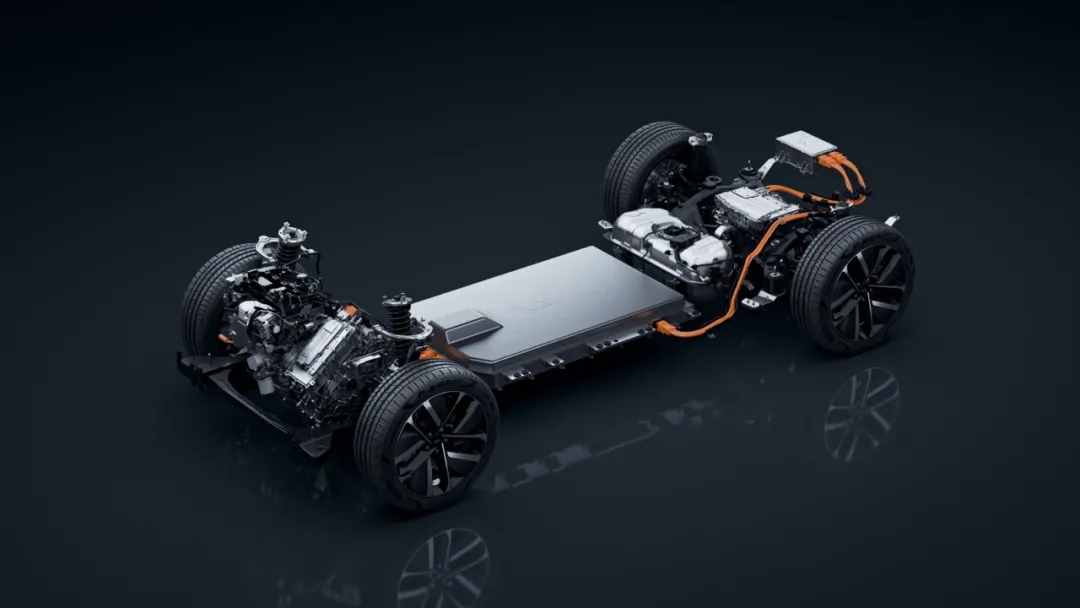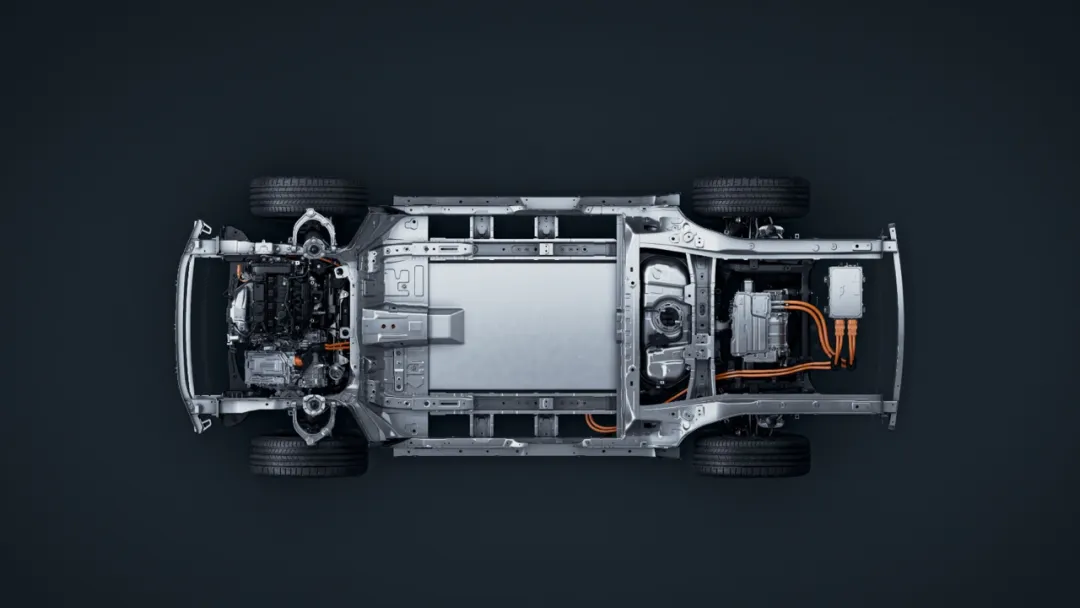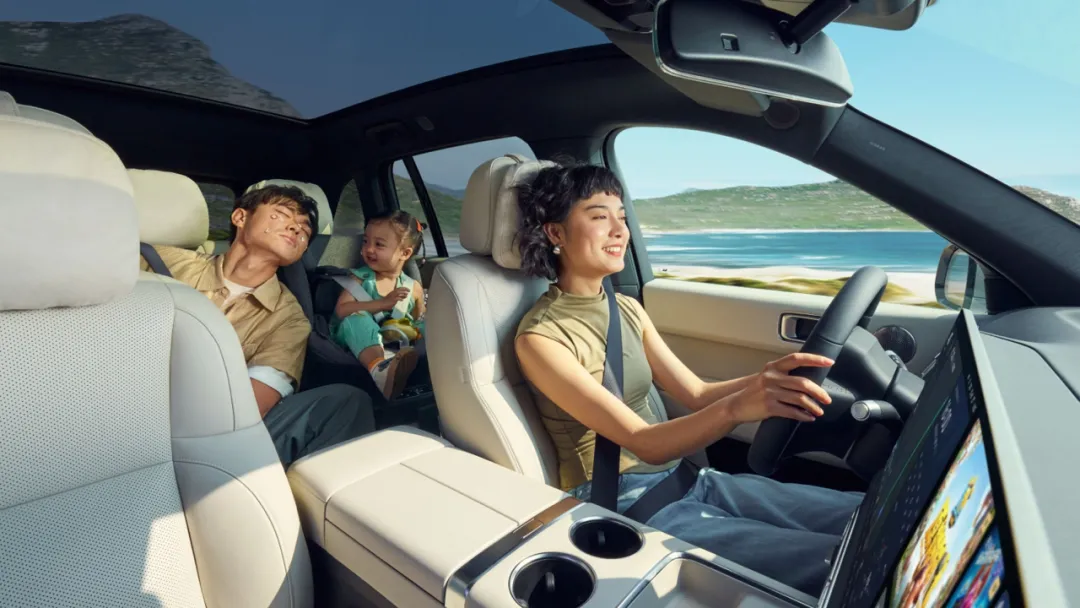01
New trend in future automobiles: dual-motor intelligent four-wheel drive
The "driving modes" of traditional cars can be divided into three categories: front-wheel drive, rear-wheel drive, and four-wheel drive. Front-wheel drive and rear-wheel drive are also collectively referred to as two-wheel drive. Generally, household scooters are mainly front-wheel drive, and front-wheel drive represents economy; high-end cars and SUVs are mainly rear-wheel drive or four-wheel drive, with rear-wheel drive representing control, and four-wheel drive representing all-around or off-roading.
If you compare the two driving force model vividly: "The front drive is for climbing, and the rear drive is for pedaling." Its advantages are simple structure, low cost, easy maintenance, and relatively low fuel consumption, but its shortcomings are also more obvious.
The front wheels of a front-wheel drive vehicle bear the dual tasks of driving and steering at the same time. The center of the engine and drive shaft is usually also at the front of the vehicle. As a result, when a front-wheel drive vehicle turns on a slippery road in rainy days and presses the accelerator, the front wheels are more likely to break through the adhesion force. , making the vehicle prone to "head pushing", that is, under steer.
A common problem with rear-wheel drive vehicles is "drifting", which is caused by the rear wheels breaking through the grip limit before the front wheels when cornering, causing the rear wheels to slide, that is, over steer.
Theoretically speaking, the "climbing and pedaling" four-wheel drive mode has better traction and adhesion than two-wheel drive, has richer vehicle usage scenarios, and can provide better control ability on slippery or muddy roads. And stability, as well as stronger passing ability, can also greatly improve driving safety, and is the best driving mode for cars.
With the continuous popularity of electric vehicles and hybrid vehicles, the classification of four-wheel drive has gradually become more complicated. After the LI L6 was launched, some users were curious, which category does the LI L6’s four-wheel drive belong to?
We can make an analogy with the four-wheel drive of a fuel vehicle. Four-wheel drive for fuel vehicles is generally divided into part-time four-wheel drive, full-time four-wheel drive and timely four-wheel drive.
Part Time 4WD can be understood as the "manual transmission" in four-wheel drive. The car owner can judge independently according to the actual situation and realize two-wheel drive or four-wheel drive mode by turning on or off the transfer case. Convert.
Full-time four-wheel drive (All Wheel Drive) has a center differential and independent limited-slip differentials for the front and rear axles, which distribute the driving force to the four tires in a certain proportion. As the name suggests, four wheels can provide driving force at any time and under any working conditions.
Real-time 4WD can automatically switch to four-wheel drive mode when appropriate, while maintaining two-wheel drive under other circumstances.
In the era of four-wheel drive fuel vehicles, since the power source is only the engine in the front cabin, creating different driving modes and achieving torque distribution between the front and rear axles requires relatively complex mechanical structures, such as front and rear drive shafts and transfer cases. , multi-plate clutch center differential, and the control strategy is relatively complex. Usually only high-end models or high-end versions are equipped with four-wheel drive.
The situation has changed in the era of smart electric vehicles. As electric vehicle technology continues to improve, the front and rear dual-motor architecture can allow a vehicle to have sufficient power. And because the power sources of the front and rear wheels are independent, there is no need for complex power transmission and distribution devices.More flexible power distribution can be achieved through the electronic control system, which not only improves the vehicle's handling performance, but also allows more users to enjoy the convenience of four-wheel drive at a lower cost.
As new energy vehicles enter more households, the advantages of smart electric four-wheel drive, such as high efficiency, flexible switching, fast response, and good driving experience, are recognized by more people. Dual-motor smart four-wheel drive is also considered one of the new trends in future automobiles. .
On the LI L6, in daily driving environments such as urban roads and highways where the speed is relatively stable, users can select "road mode" and further adjust to "comfort/standard" or "sport" power mode as needed to achieve Switching between optimal comfort, economy and performance ratios.
In the "Comfort/Standard" power mode, the front and rear wheel power adopts a golden distribution ratio with comprehensive optimization of energy consumption, which is more inclined to comfort and economy, without causing waste of power and loss of fuel and electricity. In the "Sport" power mode, the optimal proportion of power is adopted to enable the vehicle to obtain more ideal traction.
"The intelligent four-wheel drive of the LI L6 is similar to the full-time four-wheel drive of traditional fuel vehicles, but the intelligent four-wheel drive of the LI L6 also has a smart "brain" - the XCU central domain controller. Actions such as suddenly turning the steering wheel, stepping hard on the accelerator, as well as the vehicle's real-time attitude status parameters detected by the sensor (such as vehicle longitudinal acceleration, yaw angular velocity, steering wheel angle, etc.), automatically adjust the best driving force output solution for the front and rear wheels, and then With dual motors and electronic control, the four-wheel drive torque can be adjusted and distributed easily and accurately in real time," said calibration development engineer GAI.
Even in these two power modes, the four-drive power output ratio of the LI L6 can be dynamically adjusted at any time through a self-developed software control algorithm, further taking into account the vehicle's drivability, power, economy and safety.
02
All LI L6 series are equipped with intelligent four-wheel drive as standard. How useful is it for daily driving?
For mid-to-large luxury SUVs of the same size as the LI L6, dual-motor intelligent four-wheel drive is generally only available in mid-to-high-end configurations, and requires tens of thousands of yuan to upgrade. Why does LI L6 insist on four-wheel drive as standard equipment for all series?
Because when building cars, Li Auto always puts the value of family users first.
At the Li Li L6 launch conference, Tang Jing, vice president of R&D of Li Auto, said: “We have also studied a two-wheel drive version, but since the acceleration time of the two-wheel drive version is close to 8 seconds, more importantly, the stability on complex road surfaces , it was far from meeting our requirements, and in the end we gave up the two-wheel drive without hesitation.”
As a luxury mid-to-large SUV, the LI L6 is equipped with dual front and rear motors as standard. The power system has a total power of 300 kilowatts and a total torque of 529 N·m. It accelerates to 100 kilometers in 5.4 seconds, which is ahead of the excellent performance of 3.0T luxury cars, but This is just the passing line for the LI L6 intelligent four-wheel drive. Better ensuring the safety of the user and his family in all road conditions is the perfect score we want to pursue.
On the LI L6, in addition to highway mode, users also have three road modes to choose from: steep slope mode, slippery road, and off-road escape, which can basically cover most non-paved road driving scenarios for home users.
Under normal circumstances, dry, good asphalt or concrete pavement has the largest adhesion coefficient, and most vehicles can pass smoothly. However, when faced with some non-paved roads or more complex and harsh road conditions, such as rain, snow, mud, potholes and water, combined with uphill and downhill slopes, the adhesion coefficient is small, and the friction between the wheels and the road is greatly reduced, and the two-wheel drive vehicle may If some wheels slip or spin, or are stuck in place and cannot move, the better passability of the four-wheel drive vehicle will be revealed.
The meaning of a luxury four-wheel drive SUV is to be able to take the whole family smoothly, safely and comfortably through various complex roads.
picture
A test video was shown at the LI L6 launch conference. The two-wheel drive version of the LI L6 and a certain pure electric SUV simulated climbing on a slippery road with a gradient of 20%, which is equivalent to the familiar gentle slope road in rain and snow weather. The LI L6 in "slippery road" mode passed through gentle slopes steadily, while the two-wheel drive version of a pure electric SUV slid directly down the slope.
The part that is not shown is that we set more "difficulties" for the LI L6 during the test process - simulating ice and snow roads, pure ice roads, and climbing on half rainy, snowy, and half muddy roads. In the "slippery road" mode, the LI L6 successfully passed the test. What is particularly worth mentioning is that the LI L6 can pass a 10% slope of pure ice.
"This is naturally determined by the physical characteristics of four-wheel drive and two-wheel drive. Under the same power, four-wheel drive vehicles have better grip and stability than two-wheel drive vehicles." said Jiage from the product evaluation team.
In the north, the temperature is low in winter, and traffic accidents caused by icy and slippery roads are common. After winter in the south, once water is sprinkled on the road, a thin layer of ice will form, becoming a major hidden danger to motor vehicle driving safety. Regardless of the north or the south, when winter comes, many users drive with trepidation while worrying: Will they lose control if they swerve on a slippery road?
Although some people say: No matter how good the four-wheel drive is, it is better to replace winter tires. In fact, in the northern region south of Liaoning, the proportion of users replacing winter tires has dropped significantly, while the vast majority of car owners in the southern region will use original all-season tires and go to replace their cars. Because the cost of tire replacement and storage costs bring a lot of trouble to users.
However, a good four-wheel drive system can better ensure driving safety in all kinds of rain, snow, and slippery road conditions. To this end, we also tested the body stability of the Li L6 during straight-line acceleration and emergency lane changes on slippery roads.
The electronic stability system (ESP) of the body plays a key role as a necessary safety barrier at this time. After the LI L6 turns on the "slippery road" mode, it will slip, over steer, and under steer when accelerating on a slippery road or making an emergency lane change. When the situation occurs, ESP can detect in real time that the vehicle is in an unstable state, and will immediately correct the vehicle's running direction and body posture.
Specifically, when the vehicle under steers, ESP increases the pressure on the inside rear wheel and reduces the driving torque, thereby reducing the degree of under steer and making tracking stronger; when the vehicle over steers, ESP applies brakes to the outside wheels to reduce steering. Excessive, correct the driving direction. These complex system operations occur in an instant, and during this process, the driver only needs to give directions.
We have also seen that even with ESP working, there is a big difference in the stability of four-wheel drive and two-wheel drive SUVs when changing lanes and starting on slippery roads - the LI L6 suddenly accelerated to a speed of 90 kilometers per hour in a straight line. It can still maintain stable straight-line driving, the yaw amplitude is also very small when changing lanes, and the body is quickly and smoothly calibrated back to the driving direction. However, the two-wheel drive version of a pure electric SUV has poor stability and tracking, and requires multiple manual corrections.
"Generally speaking, as long as the driver does not deliberately perform dangerous actions, it is basically impossible for the LI L6 to lose control."
Many family users who like to travel by car have had the experience of having their wheels get stuck in a mud pit on a dirt road, requiring someone to push the cart or even call for roadside rescue. Leaving a family in the wilderness is really an unbearable memory. For this reason, many cars are equipped with an "off-road escape" mode, but it can be said that the "off-road escape" mode is more valuable only under the premise of four-wheel drive. Because "if the two rear tires of a rear-wheel drive vehicle fall into a mud puddle at the same time, no matter how hard you step on the accelerator, the tires will only skid wildly and cannot grip the ground at all."
On the LI L6 equipped with standard intelligent four-wheel drive, when the user encounters the vehicle getting stuck in mud, snow and other working conditions, the "off-road escape" function is turned on. The electronic assistance system can detect wheel slippage in real time and quickly and effectively deal with the slipping wheel. Carry out braking control so that the driving force of the vehicle is transferred to the coaxial wheels with adhesion, helping the vehicle to get out of trouble smoothly.
In order to cope with the downhill roads that vehicles will encounter in the suburbs and scenic spots, the LI L6 also has a "steep slope mode".
Users can freely set the vehicle speed within the range of 3-35 kilometers. After ESP receives the instruction, it actively adjusts the wheel end pressure to make the vehicle go downhill at a constant speed according to the driver's desired speed. The driver does not need to spend energy controlling the speed of the vehicle, he only needs to grasp the direction, and can save more energy to observe the road conditions, vehicles and pedestrians on both sides. This function requires very high system control accuracy.
It can be said that without four-wheel drive, the passability and sense of security of a luxury SUV are empty talk, and it cannot steadily carry a family's happy life.
Meituan founder Wang Xing said after the live broadcast of the LI L6 launch conference: "There is a high probability that the L6 will be the model that Ideal's employees buy the most."
Shao Hui, a range extender control system engineer who participated in the development of the LI L6, thinks this way. He often imagines traveling with his family in an LI L6: “I am a typical L6 user, and the car I need must be suitable for most road conditions. Under all conditions, I and my family can move forward and pass comfortably. If my wife and children are forced to leave on the road, I will feel very guilty.”
He believes that the LI L6 equipped with intelligent four-wheel drive as standard will bring real value to users in terms of not only better performance, but more importantly, a higher standard of safety. The LI L6's intelligent electric four-wheel drive system will have better ability to get out of trouble when faced with ice and snow climbing roads and muddy gravel roads in the countryside, helping users go to more and further places.
03
Intelligent traction control "dual redundancy", safer than safe
“When doing line-changing calibration for the LI L6, even at a high speed of 100 kilometers per hour, our standard is to control the body movement very stably, coordinate the movements of the front and rear axles, and minimize the tendency of the rear end of the car to slide. It was like a performance sports car,” Yang Yang, who developed the chassis electronic control integration, recalled.
As everyone has felt, each car company, and even each car, has different capabilities and style preferences, so there will definitely be trade-offs when calibrating four-wheel drive performance.
Li Auto's product positioning focuses on home users, and its performance calibration orientation always puts safety and stability first.
"No matter what the situation is, we want the driver to feel very confident the moment he turns the steering wheel. We want him to always feel that his car is very stable and safe, and we don't want any family members riding in it to feel scared or have any fear of the vehicle. There are concerns about safety," Yang Yang said.
LI L6 will not put home users in even the slightest dangerous driving situation, and we spare no effort in investing in safety work.
In addition to ESP, Li Auto has also self-developed an "intelligent traction control algorithm" deployed in Li Auto's self-developed scalable multi-domain control unit, which works with ESP to achieve dual safety redundancy of controller software and hardware.
When the traditional ESP fails, the intelligent traction control system actively adjusts the output torque of the motor when wheels slip, controls the wheel slip rate within a safe range, and provides maximum driving force while ensuring vehicle safety. Even if ESP fails, the intelligent traction control algorithm can function independently to provide users with a second safety barrier.
In fact, the ESP failure rate is not high, but why do we insist on doing this?
"If an ESP failure occurs, it will have a fatal blow to home users, so we believe that even if the probability is very small, Li Auto will still insist on investing a lot of people and time in research and development to provide users with a second layer of 100% security." Calibration Development Engineer GAI said.
At the Li Li L6 launch conference, Tang Jing, vice president of research and development of Li Auto, said: "The key capabilities of the four-wheel drive system, even if only used once, are of great value to our users."
As mentioned at the beginning, four-wheel drive is like a reserve that can be used normally, but cannot be left out at critical moments.
Post time: May-13-2024



